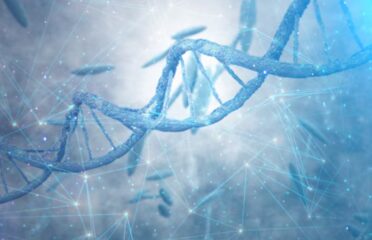Ataxias and Cerebellar or Spinocerebellar Degeneration
Overview

Ataxia is a condition that arises when the nervous system's movement-controlling parts get damaged.
People with ataxia have difficulty controlling their arm and leg muscles, which leads to a disturbance of gait, poor coordination, and balance issues.
Although the term ataxia is mostly used to describe these symptoms, it can also refer to a group of disorders. However, it does not represent a specific diagnosis.
Most disorders that cause ataxia lead to degeneration or atrophy of the cerebellum, a part of the brain.
Sometimes, the spine is also affected. Cerebellar degeneration and spinocerebellar degeneration refer to changes in a person's nervous system, but neither of these terms constitutes a specific diagnosis. There can be many different causes of cerebellar and spinocerebellar degeneration.
Symptoms
Symptoms of cerebellar or spinocerebellar degeneration may include:
• Worsening Ataxia: Gradual deterioration of coordination and balance, leading to increased difficulties with movement control.
• Muscle Weakness: Weakening of muscles, contributing to difficulties in movement and coordination.
• Tremors: Involuntary shaking or tremors in the arms, legs, or other parts of the body.
• Changes in Reflexes: Alterations in reflexes, which can be either exaggerated or diminished.
• Speech and Swallowing Issues: Progression of speech difficulties and challenges with swallowing.
Causes & Risks
• Ataxia and cerebellar degeneration stem from various causes, including genetic factors, strokes, brain injuries, and tumors.
• Certain infections or exposure to toxins like alcohol or specific medications can also induce ataxia.
• Autoimmune disorders, where the immune system targets the body's tissues, can lead to ataxia by attacking the cerebellum.
• Metabolic disorders such as vitamin E deficiency or energy metabolism issues can similarly affect the cerebellum and cause ataxia.
• The diversity of causative factors underscores the complexity of ataxia and cerebellar degeneration.
• Understanding the underlying cause is crucial for accurate diagnosis and tailored management of ataxia and cerebellar degeneration.
Test & Diagnosis
• Diagnosing spinocerebellar ataxia involves assessing cerebellar damage and identifying genetic defects.
• Magnetic Resonance Imaging (MRI) and computed tomography (CT) scans examine brain structures and shrinkage.
• Blood tests are conducted to identify any related illnesses.
• Modern genetic testing is crucial in diagnosing and pinpointing specific genetic abnormalities.
• DNA tests, specifically for Spinocerebellar Ataxia (SCA tests), aid in categorizing ataxia into different types.
• Combining these diagnostic techniques ensures accurate identification and classification of spinocerebellar ataxia, facilitating tailored management strategies.
Treatment
• Spinocerebellar ataxia (SCA) lacks a definitive cure, emphasizing symptom management and disease progression control.
• Treatment primarily aims to manage symptoms and decelerate SCA advancement.
• Physiotherapy enhances balance and mobility, addressing motor challenges associated with SCA.
• Speech therapy targets speech clarity and swallowing issues commonly observed in SCA patients.
• Medical equipment aids in delicate motor skill tasks and self-care activities to improve daily functioning.
• Medications may alleviate symptoms like tremors, depression, stiffness, muscle pain, and sleep disturbances, enhancing the overall quality of life for individuals with SCA.
Living With
Living with ataxia or cerebellar degeneration poses significant challenges, profoundly impacting daily life.
Affected individuals encounter difficulties in coordination, balance, and voluntary muscle control, hindering mobility and routine tasks.
Simple activities such as walking, reaching for objects, or speaking may become more challenging.
The relentless progression of these conditions exacerbates symptoms over time, diminishing independence and overall quality of life.
Managing the physical and emotional toll of ataxia and cerebellar degeneration requires comprehensive support and adaptive strategies to navigate the complexities of daily living effectively.
Complications
• Ataxia and cerebellar degeneration are progressive conditions with multifaceted complications.
• These complications include mobility, speech and swallowing difficulties, and reduced independence.
• Individuals may face social and emotional impacts, safety concerns, and progressive disability.
• Falls, slurred speech, and difficulty eating are common issues associated with these conditions.
• Social isolation, balance problems, and reliance on caregivers or assistive devices often occur.
• As the conditions advance, independence diminishes, leading to severe disability.

The Content is not intended to be a substitute for professional medical advice, diagnosis, or treatment. Always seek the advice of your physician or other qualified health provider with any questions you may have regarding a medical condition.
Know more about
Our Healthcare Planner
Personal Health Planner at BNC is a support staff who listens to your concerns and connects you with a Neuro Care provider. They prioritize your needs and create a trusting relationship between you and the provider.
Three fundamental values we can assure you:
1. Personalized Healthcare.
2. Most advanced robotic therapies
3. Transparent pricing





